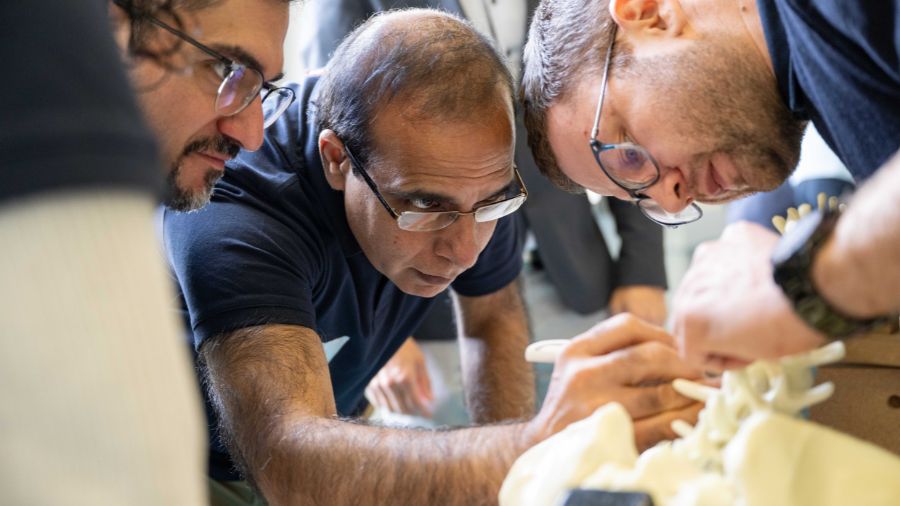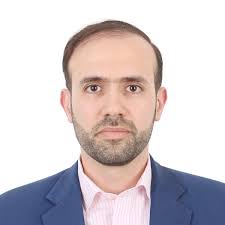AO Spine Course—Deformity: Key Concepts and Techniques
Unlock the path to mastering spine deformity surgery

This two-day, interactive course covers the key concepts, principles, and techniques for managing spinal deformity in adult and pediatric patients.
Fundamental course for everyone who is interested in deformity management, this course includes:
- Online pre-learning modules with state-of-the-art knowledge by world leading experts in spinal deformity management
- Interactive classroom learning through case-based learning and reflection with expert faculty
- Practical skills lab on customized bone models that feature real deformities.
Why you should choose this course
World-class curriculum
Developed by leading global experts
Expert faculty
Learn from renowned regional specialists
Hands-on experience
2 days in duration
Network
Build valuable professional connections
Course content
-
Online pre-learning
Topics covered:
- Radiographs and terminology in radiographic assessment of scoliosis
- Growth and scoliosis
- How to measure radiographs: AIS
- Clinical evaluation of pediatric scoliosis including Adams test, shoulder and trunk balance, gender characters, gibbus, curve flexibility
- Lenke’s classification of AIS and its application to determination of levels of fusion
- Pedicle screw fixation in the thoracic and lumbosacral spine (practical exercise video)
- Principles of neuromonitoring for deformity surgery
- Hook placement (practical exercise video)
- Sacropelvic fixation (practical exercise video)
-
Course modules
- Assessing deformity of the spine
- Intraoperative neuromonitoring (IONM)
- Selection of fusion levels in Idiopathic Scoliosis and Kyphosis
- Degenerative scoliosis
- Scheuermann’s kyphosis*
*only in selected courses-please check the final course program
-
Case-based discussions
*Analyse real-world clinical cases to enhance clinical decision-making and problem-solving skills. These discussions foster collaboration among participants and faculty and provide expert guidance while connecting theoretical insights with practical, hands-on applications.
- History and physical examination in pediatric and adolescent spinal deformity
- History and physical examination in adult deformity
- Application of the Lenke’s Classification
- Selection of fusion levels in Lenke 1 and 2 patterns
- Selection of fusion levels in degenerative scoliosis: short fusion vs long fusion vs aggressive osteotomies.
-
Case-based exercises
*Activity where participants are given specific tasks or clinical challenges to solve. It promotes active learning by requiring applying theoretical knowledge and practical experience to real-world cases, with expert feedback guiding their approach.
- Measuring Cobb angles and designating specific vertebrae on radiographs
- Measuring spinopelvic parameters in ASD cases
- Selection of fusion levels based on Lenke classification in adolescent scoliosis cases
- Selection of fusion levels based Scheuerman’s Disease*
- L3 vs L4 as LIV in lumbar curves and applying the sagittal modifier concept in AIS*
- Selection of fusion levels in Lenke 1AR vs Lenke 1AL
- Selection of fusion levels in different cases of degenerative scoliosis
*Only in selected courses-please check the final course program
-
Practical exercises - Spine Skills Lab
Skills Lab 1: Correction of thoracic scoliosis in AIS
- Pedicle screw placement with anatomical references in the thoracic spine,
- Grade I and II osteotomies to enhance flexibility,
- Differential rod contouring to increase apical derotation,
- Execution and observation of the effect of different sequences and modalities of rod application and correction
Skills Lab 2: Correction of the novo adult lumbar scoliosis
- Posterior fixation with pedicle screws (T10-S1),
- Pelvic fixation (Iliac and S2I screws),
- Grade I and II posterior column osteotomies to release the spine,
- Rod contouring,
- Execution and observation of the effects of different modes of application and correction,
- Management of the sagittal plane.
Skills lab 3 – Scheuermann’s kyphosis*
- Correction of Scheuermann’s kyphosis with level-by-level compression and cantilever
- Ponte osteotomies in the thoracic spine
*Only in selected courses, please check your program
Who should attend
- Spine surgeons interested in the treatment of spinal deformity
- Neurosurgical and orthopedic spine fellows and residents at the end of their training
- Global Spine Diploma participants and alumni
- Experienced surgeons who want an update on general principles of deformity management.

“The course curriculum is designed to deliver the learning through an active experience: active discussions based on real cases, interactive exercises that apply the knowledge from those cases, and step-by-step hands-on practical sessions. This way, we ensure that learners not only acquire the information but also know how to apply it. The experience of the faculty, the professionalism of the support team, and the peer-to-peer, friendly training tradition of AO make all the difference. It is an experience that will leave a lasting impression.”
Pedro Berjano
Chairperson AO Spine Europe and Southern Africa
Chair of Deformity Curriculum Taskforce
Competencies
- Perform a history, clinical, and physical examination in adult and pediatric patients with deformity
- Order and interpret imaging and investigations to classify the scoliosis, kyphosis, and associated deformities
- Plan surgical correction appropriate to the patient and pathology using Cobb angles, etc, and recognize when nonoperative care is an option
- Place pedicle screws and hooks in the thoracic and lumbar spine
- Perform correction maneuvers (contouring, rod arrangement, reduction, correction, and osteotomies)
- Avoid and manage complications
- Recognize the role of emerging technologies and latest research findings and evidence in clinical practice
AO Spine Deformity Curriculum Task Force
The Deformity Curriculum taskforce is a group of experts who build and continuously improve our educational program.

Pedro Berjano
Italy
Chair of the Taskforce
Representing Europe and Southern Africa

Luis Eduardo Carelli
Brazil
Representing Latin America

Eric Klineberg
US
Representing North America

Omar Alnori
Qatar
Representing Middle East and Northern Africa

Yong Hai
China
Representing Asia Pacific

Alpaslan Senkoylu
Representing
AO In-Hospital

Evan Davies
Representing
Global Spine Diploma

Michael Kelly
Representing
Knowledge Forum Deformity

Richard Bransford
AO Spine Education Commission Chairperson

Bryan Ashman
AO Spine Curriculum Advisor





